Lisa van Staden
A comparison of self-supervised speech representations as input features for unsupervised acoustic word embeddings
Dec 14, 2020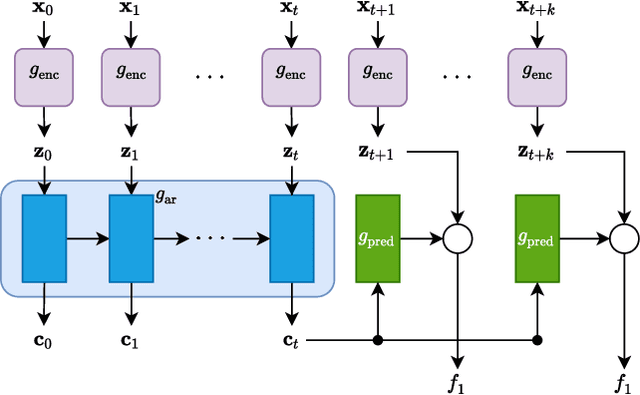

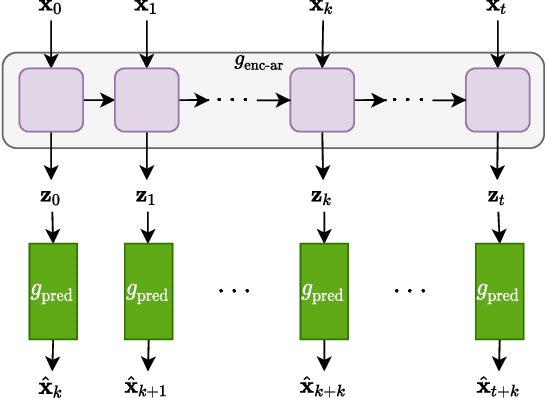
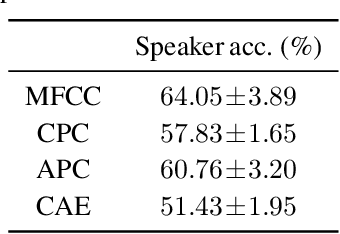
Abstract:Many speech processing tasks involve measuring the acoustic similarity between speech segments. Acoustic word embeddings (AWE) allow for efficient comparisons by mapping speech segments of arbitrary duration to fixed-dimensional vectors. For zero-resource speech processing, where unlabelled speech is the only available resource, some of the best AWE approaches rely on weak top-down constraints in the form of automatically discovered word-like segments. Rather than learning embeddings at the segment level, another line of zero-resource research has looked at representation learning at the short-time frame level. Recent approaches include self-supervised predictive coding and correspondence autoencoder (CAE) models. In this paper we consider whether these frame-level features are beneficial when used as inputs for training to an unsupervised AWE model. We compare frame-level features from contrastive predictive coding (CPC), autoregressive predictive coding and a CAE to conventional MFCCs. These are used as inputs to a recurrent CAE-based AWE model. In a word discrimination task on English and Xitsonga data, all three representation learning approaches outperform MFCCs, with CPC consistently showing the biggest improvement. In cross-lingual experiments we find that CPC features trained on English can also be transferred to Xitsonga.
Unsupervised acoustic unit discovery for speech synthesis using discrete latent-variable neural networks
Apr 16, 2019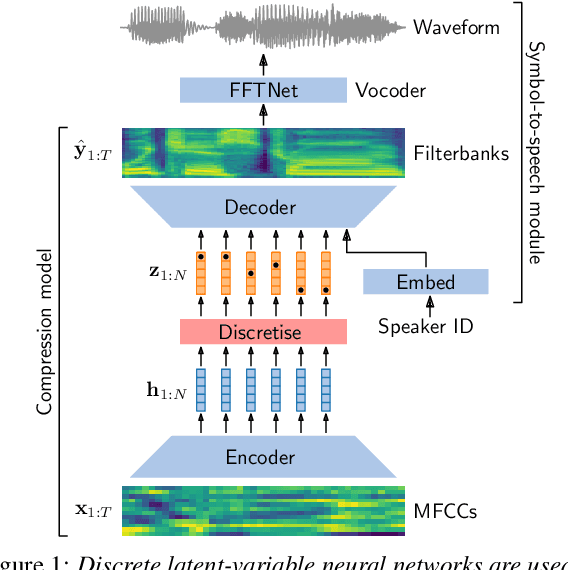
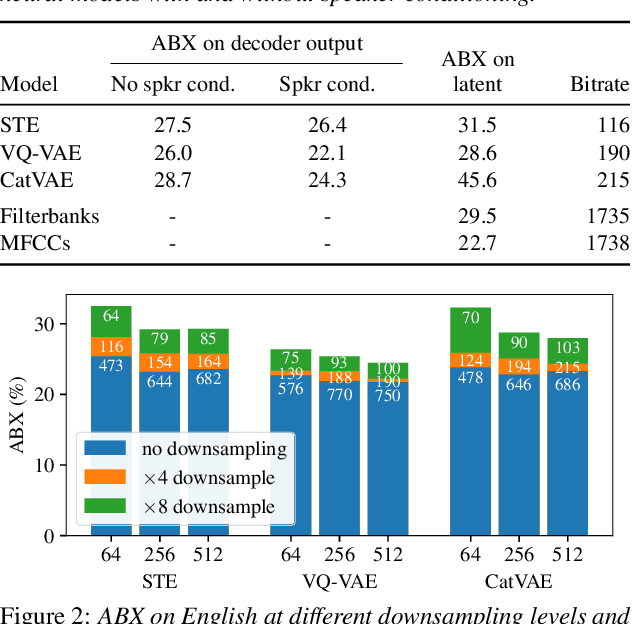
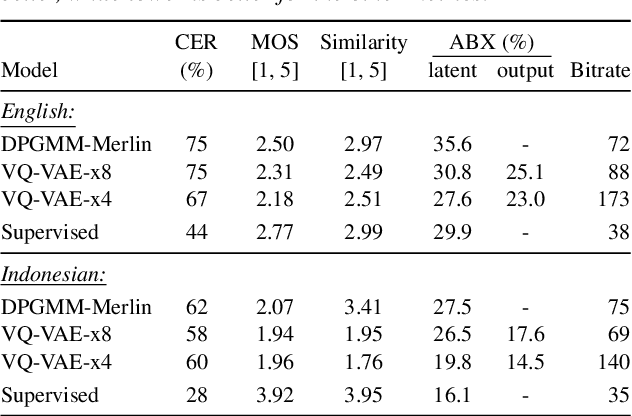
Abstract:For our submission to the ZeroSpeech 2019 challenge, we apply discrete latent-variable neural networks to unlabelled speech and use the discovered units for speech synthesis. Unsupervised discrete subword modelling could be useful for studies of phonetic category learning in infants or in low-resource speech technology requiring symbolic input. We use an autoencoder (AE) architecture with intermediate discretisation. We decouple acoustic unit discovery from speaker modelling by conditioning the AE's decoder on the training speaker identity. At test time, unit discovery is performed on speech from an unseen speaker, followed by unit decoding conditioned on a known target speaker to obtain reconstructed filterbanks. This output is fed to a neural vocoder to synthesise speech in the target speaker's voice. For discretisation, categorical variational autoencoders (CatVAEs), vector-quantised VAEs (VQ-VAEs) and straight-through estimation are compared at different compression levels on two languages. Our final model uses convolutional encoding, VQ-VAE discretisation, deconvolutional decoding and an FFTNet vocoder. We show that decoupled speaker conditioning intrinsically improves discrete acoustic representations, yielding competitive synthesis quality compared to the challenge baseline.
 Add to Chrome
Add to Chrome Add to Firefox
Add to Firefox Add to Edge
Add to Edge